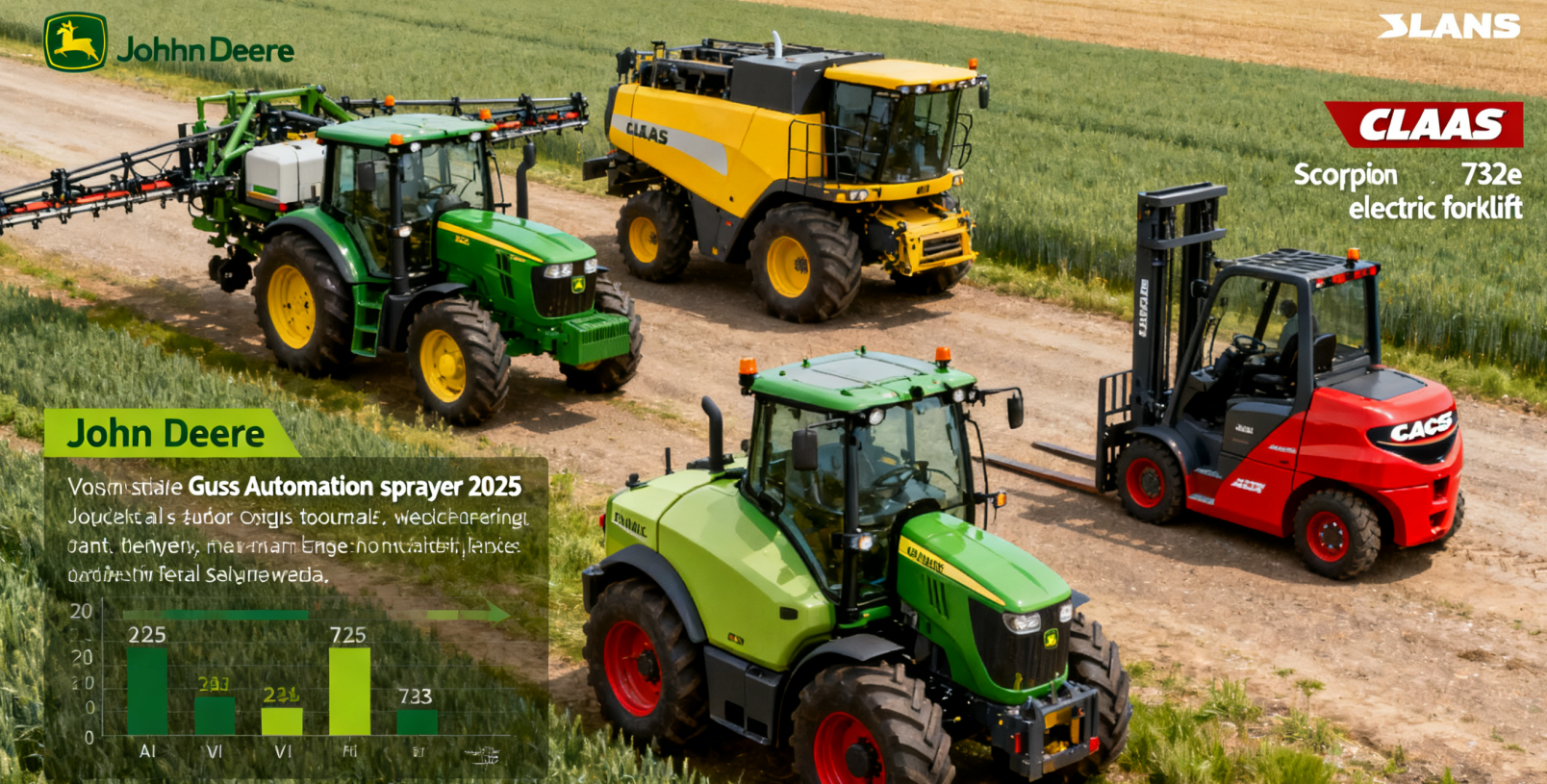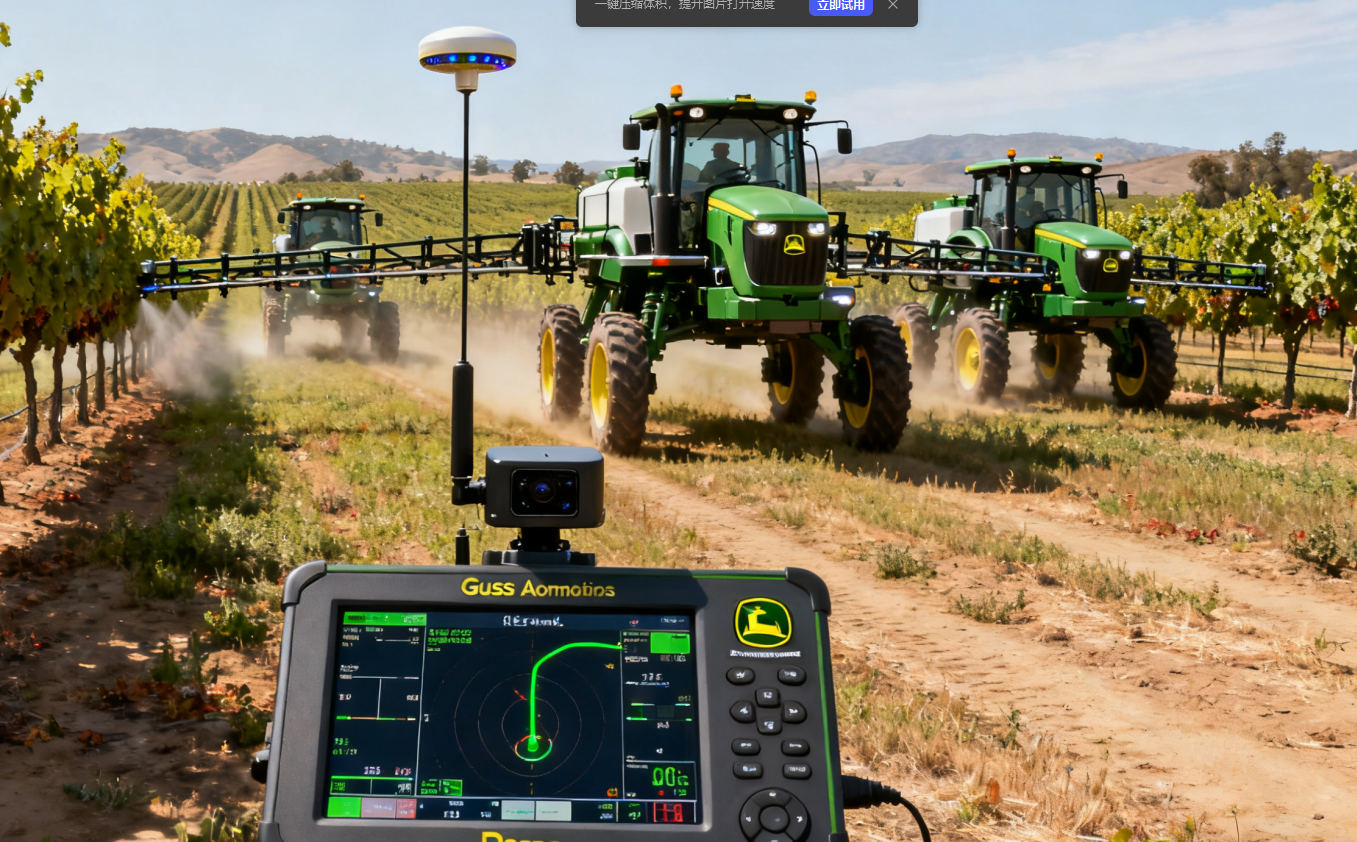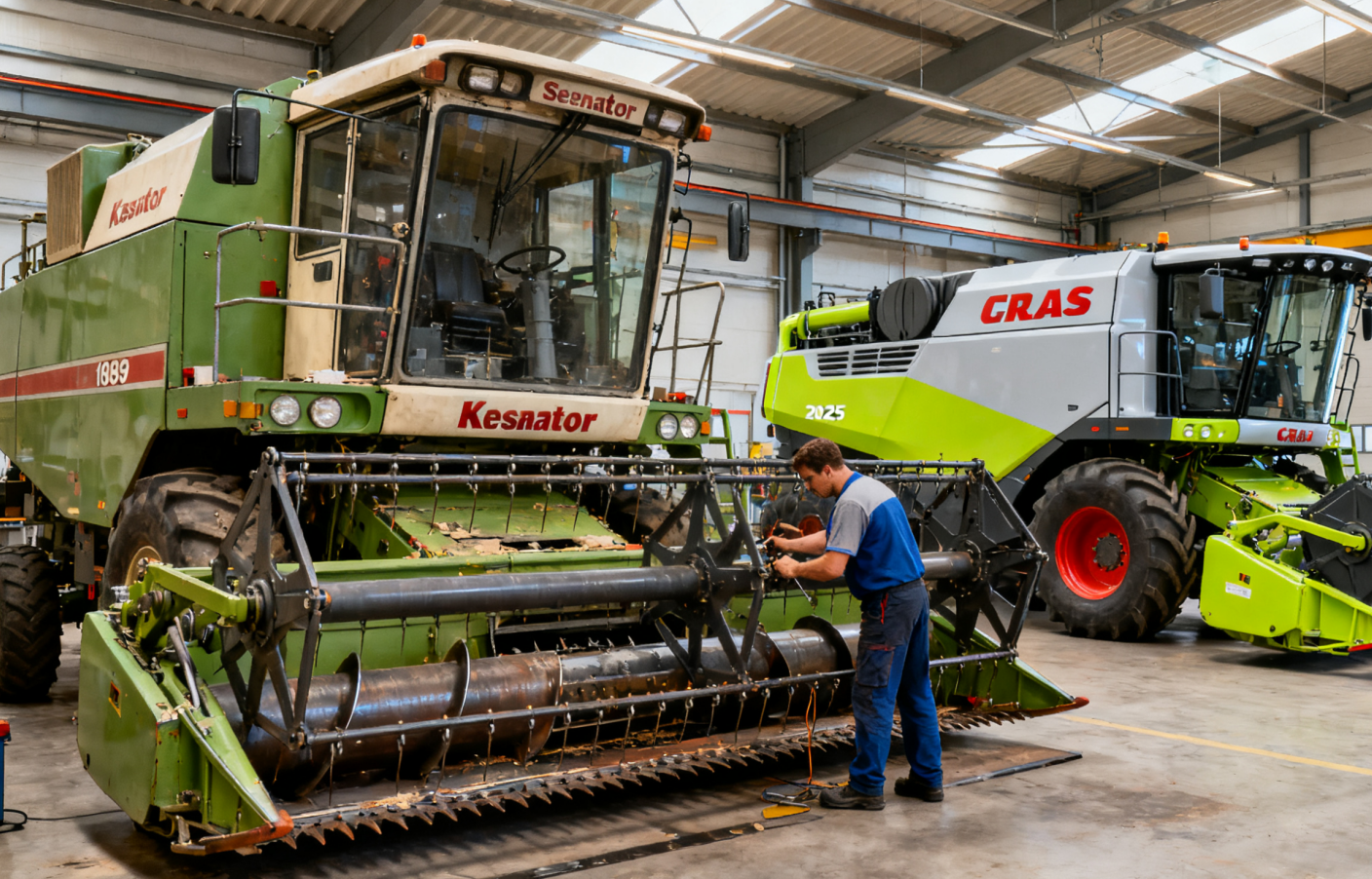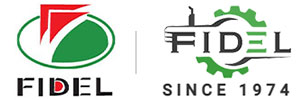Woodland, California (November 6, 2025) The three-day FIRA USA 2025 Agricultural Robotics Summit concluded recently. Coupled with the upcoming enforcement of the EU’s new environmental standard EN 17744:2025, the world’s top three agricultural machinery giants—John Deere, CLAAS, and Case IH—have intensively released technical signals. From acquiring automation companies to testing electric prototypes, from building data interoperability alliances to deepening regional market penetration, industry leaders are adopting a “technological breakthrough + ecological synergy” strategy to address the dual pressures of a 17.4% global farm income decline and a 2.4 million agricultural labor shortage.

John Deere Boosts Autonomous Driving via Acquisition: Orchard Equipment Becomes New Battleground
[Image 1:
John Deere's Guss Automation Orchard Sprayer – Scene: A fleet of 3 autonomous sprayers operating in a California vineyard, with a remote control station in the foreground displaying real-time navigation data; Key Features: Laser radar modules and GPS antennas marked on the sprayers]
U.S. agricultural machinery leader
John Deere completed the full acquisition of California-based autonomous driving firm Guss Automation on August 27, integrating its orchard and vineyard automatic sprayer technology. The equipment enables 1 operator to remotely monitor 8 sprayers simultaneously, achieving centimeter-level navigation through GPS, lidar, and proprietary algorithms. Globally, 250 units have been deployed across 2.6 million acres of farmland, reducing labor and chemical costs by 50%. At the FIRA USA Summit,
John Deere further demonstrated the integration of this technology with its Smart Apply® targeted spray system—for high-value crops like nuts and grapes, it can accurately identify pest-infested areas and dynamically adjust spray volume, boosting pesticide utilization to 92%.
Also unveiled was the mass-produced version of the all-electric tractor first launched at CES 2025, equipped with an 85kWh battery pack and intelligent energy recovery system, offering 6 hours of battery life for small and medium-sized farms. Mark von Schulz, President of
John Deere North America, revealed: “The acquisition of Guss and our electrification layout form a ‘precision operation + green power’ dual engine, with a 2026 revenue target of $1.2 billion for related product lines.”
CLAAS Debuts Electric Prototypes: Revitalizing a Century-Old Legacy
[Image 2: CLAAS Semi-Electric Combine Harvester & Scorpion 732e Forklift – Split-screen layout: Left side shows the harvester operating in a German wheat field with "40kW Electric Assist" labeled; Right side displays the all-electric forklift at a French agricultural logistics yard; Key Note: EU emission standard compliance badge]
[Image 3: Restored 1968 CLAAS Senator Combine Harvester – Scene: The vintage machine being tested at the Harsewinkel factory in Germany, with technicians adjusting its components; Contrast Element: A 2025 prototype placed nearby for generational comparison]
German giant
CLAAS is advancing on two technical fronts: On one hand, it is promoting electrification transformation—its testing semi-electric combine harvester is equipped with a 40kW electric assist system, reducing fuel consumption by 10%; the all-electric Scorpion 732e telescopic handler achieves a 3.2-ton load capacity and 4-hour battery life, fully meeting EU emission reduction targets. These prototypes are scheduled for small-scale mass production in 2026, prioritizing supply to markets with strict environmental regulations such as Germany and France.
On the other hand,
CLAAS is strengthening its brand value through historical heritage—a 57-year-old 1968 Senator combine harvester was returned from the UK to the Harsewinkel factory in Germany for restoration and will re-enter field operations in August 2026, serving as a “mobile business card” for the brand’s durability. Joachim Oldenburg, CTO of
CLAAS, stated: “Electrification is not a subversion of tradition but a technical upgrade based on a century of manufacturing experience. Our goal is to have electric products account for 35% of our portfolio by 2030.”
Case IH Breaks Data Silos via Alliances: Targeting Emerging Markets with Mid-Range Products
[Image 4: Case IH Data Connect Cloud Platform Interface – Scene: A farmer monitoring a mixed fleet (John Deere tractor + CLAAS harvester + Case IH loader) on a tablet; Interface Highlights: Real-time trajectory map, fuel consumption dashboard, and fault alert module]
[Image 5: Case IH Farmall C Series Tractor – Scene: The tractor operating in a Brazilian soybean field with a loader attachment; Key Specifications: "117 HP" and "FPT Stage 5 Engine" marked on the hood]
CNH Industrial, parent company of
Case IH, joined forces with
John Deere,
CLAAS, and farm management platform 365farmnet to launch the “Data Connect” cloud interoperability interface. This system breaks down data barriers between different brands of equipment, allowing farmers to monitor mixed fleets’ operation trajectories, fuel consumption, and fault alerts in real time via a single terminal, with data response speed improved to 0.3 seconds. The alliance currently covers 120,000 agricultural machinery units worldwide, with plans to exceed 500,000 connected units by 2026.
For the mid-range market,
Case IH simultaneously upgraded its Farmall C series tractors. The 100-117 HP models are equipped with FPT Stage 5 engines, adding electronic power shift and 7-ton load capacity designs, suitable for loader operations in Southeast Asian hilly areas and South American soybean plantations. Camila Rodriguez, Director of Emerging Markets at
Case IH, noted: “Data interoperability solves efficiency pain points, while product upgrades adapt to regional needs—this dual strategy has driven an 18% order growth in the Brazilian market.”
Industry Transformation: Environmental Protection and Collaboration Reshape Competition Logic
[Image 6: Agricultural Machinery Industry Trend Infographic – Content: 1) Left panel: "Labor Shortage vs. Automation Adoption" data chart; 2) Middle panel: "EU EN 17744:2025 Emission Standard Requirements" checklist; 3) Right panel: "Regional Market Focus Map" (
John Deere: North America;
CLAAS: Europe;
Case IH: South America)]
The EU’s EN 17744:2025 standard for agricultural and forestry machinery dusters, which took effect in October, sets strict requirements for sealing, dust control, and noise emissions, forcing enterprises to accelerate technological iteration. Against this backdrop, the three giants share common strategic traits:
- Technology Targets Pain Points: Automation addresses labor shortages, while electrification complies with environmental regulations;
- Ecosystems Replace Solitary Efforts: Data alliances and technology acquisitions become fast paths to fill capability gaps;
- Precise Regional Focus: John Deere deepens high-end cash crop equipment in North America, Case IH targets mid-range markets in South America, and CLAAS consolidates technological advantages in Europe.
Sarah King, Analyst at the American Agricultural Machinery Association, predicted: “2025-2027 will be a ‘technological reshuffle period’ for the agricultural machinery industry. Enterprises mastering core automation technologies and building data ecosystems will capture over 60% of the high-end market share.”
Post time: 11-07-2025









